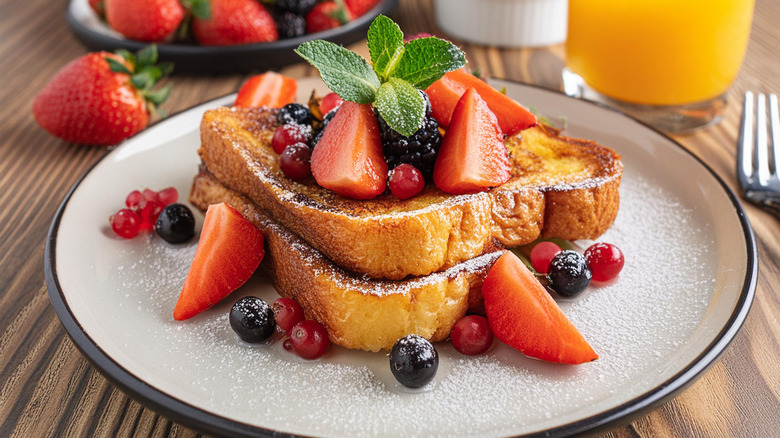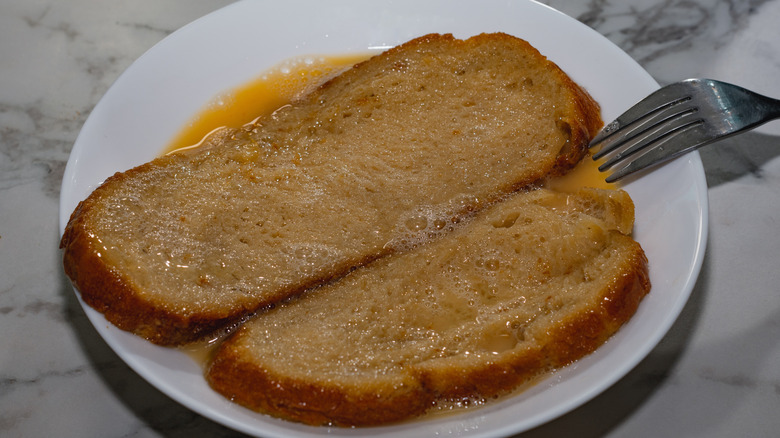How To Make The Fluffiest French Toast
When it comes to a gourmet breakfast or brunch, nothing beats a plate of perfectly fluffy French toast. There are plenty of tips to make French toast even more fabulous, but the key is achieving a pillowy center to complement its golden, crisped exterior. Mashed asked chef Kaleena Bliss at Chicago Athletic Association Hotel and its rooftop restaurant Cindy's for advice on making the fluffiest French toast, and she says it's all about choosing the right bread and giving it a long enough soak.
"Brioche is my go-to — it's already soft, buttery, and eggy," Bliss says, adding that cutting the brioche into thick slices of about an inch will help it keep a fluffy interior while the outside crisps up. While brioche French toast is a classic recipe, other types of bread that work well include challah (which is also egg-based), sourdough, and French bread.
Using day-old bread can help it fully soak up the custard without getting too soggy, but fresh bread can be toasted before soaking to create this same effect. Sourdough and French bread already have a stronger texture to begin with, so these can go right into the batter fresh for a super-custardy center with nicely crisped-up edges.
How long should you soak the bread for French toast?
For the perfect French toast, chef Kaleena Bliss says to make sure the bread is soaked all the way through — it should soak in the custard mixture "long enough for it to absorb the batter without falling apart." How long this takes depends on the type of bread, how thick it is, and also whether it's fresh or slightly stale. Fresh bread takes less time to absorb the mixture, but thicker slices will need more time in the eggy bath.
Believe it or not, the general consensus from chefs and foodies is around 20 minutes of soak time for thick slices of bread. Some recipes even call for leaving the bread smothered in the custard overnight (in the fridge, of course) until it's fully saturated. However, for classic French toast, many experts (including Martha Stewart) say around 10 minutes per side should do the trick. You can tell it's ready when the bread is soft and holds the liquid like a sponge. This will give the French toast that fluffy custard center we all love.
Another tip from Bliss is to swap out the milk in the egg batter for heavy cream. "It adds richness and creates that custardy fluffiness," Bliss explains. Classic French toast can be topped with your favorite fruits, a sprinkling of powdered sugar, and sweet maple syrup. Or try these French toast tips from celebrity chefs for outside-the-box ideas to elevate this brunch treat.

